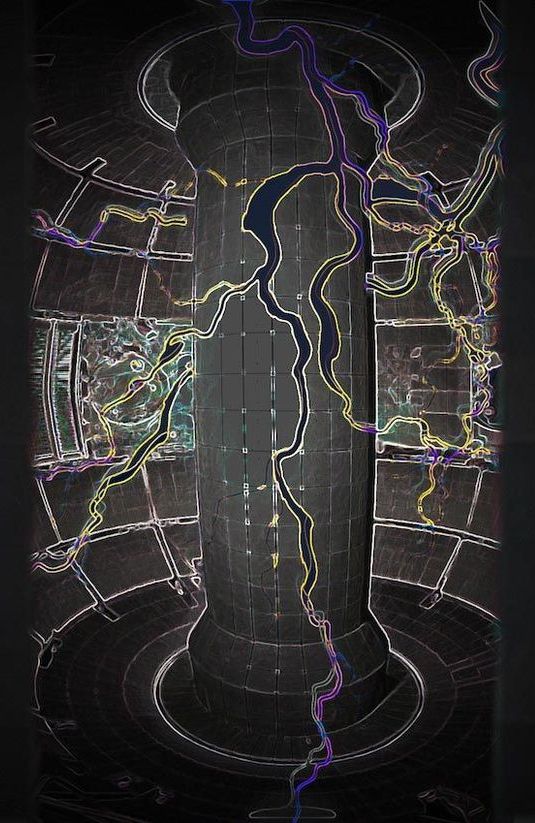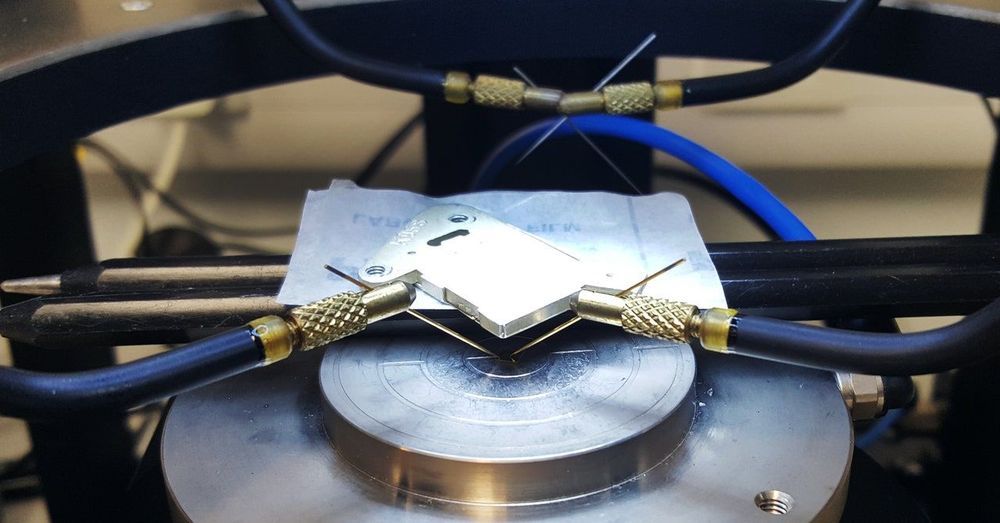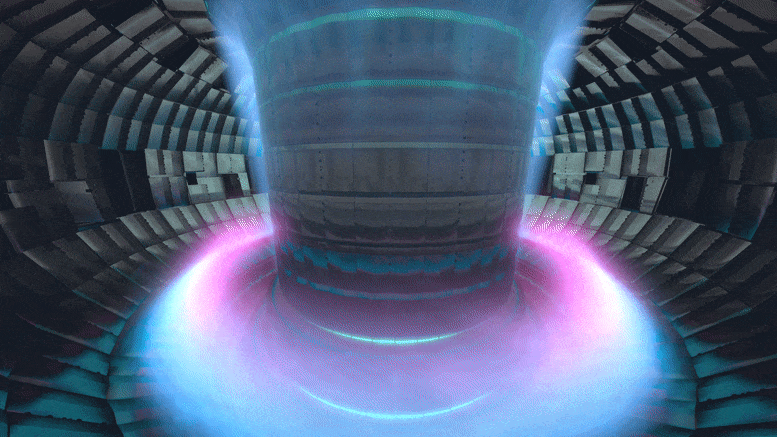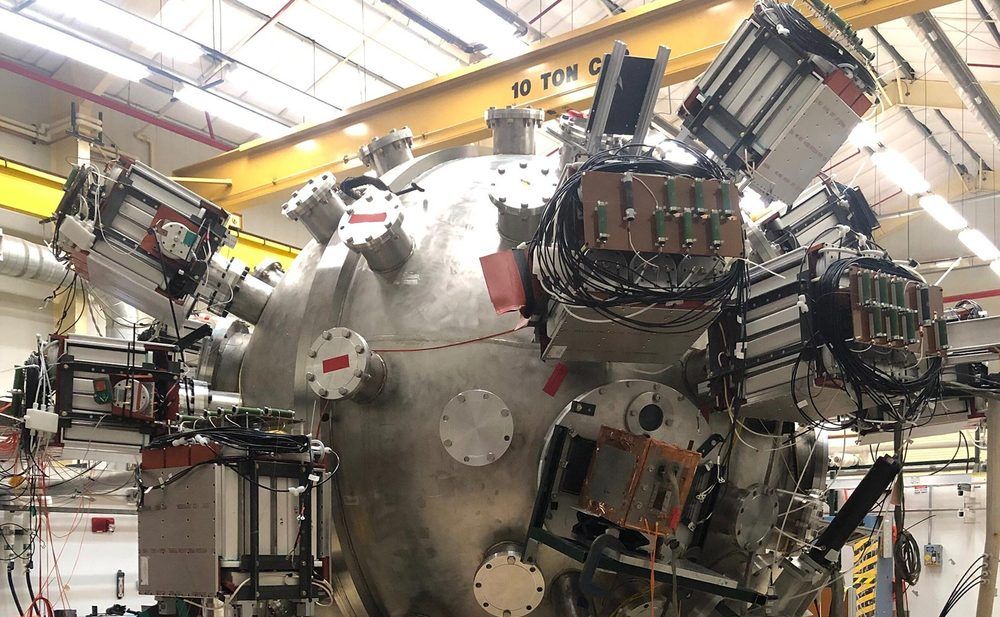Fusion Science and Technology: Vol. 75, No. 3, pp. 208–217.
Category: nuclear energy – Page 91
The cosmos was born in a churning fluid 300 million times hotter than the sun. We’ve recreated this hell, and it’s not just hot, it is also very, very strange, says Amanda Gefter (science writer based in London). TO LOOK deep into the fundamental structure of matter is to look billions of years back in time, to the moment when matter first blinked into being. Recreating the conditions of that moment has long been an aim for physicists wanting to understand how the universe evolved from the cosmic fireball that existed a fraction of a second after the big bang. Now researchers at the Relativistic Heavy Ion Collider (RHIC) at Brookhaven National Laboratory in Upton, New York, have, almost certainly, finally recreated the moments after creation. By colliding nuclei together at enormous speeds, RHIC experimenters were able to break down the structure of nuclear matter. This resulted, most experts agree, in the formation of a long-sought-after plasma that is believed to be the primal stuff of the cosmos, the state of matter at the beginning of time. It turns out, though, that the nature of matter is inextricably tied to the vacuum in which it resides. And the RHIC experiments have thrown up some surprises. They seem to show that the vacuum is a richer and more complicated place than was previously imagined. They suggest the boundary between something and nothing is more blurred than experts had predicted. The stuff made at RHIC is a plasma consisting of quarks and gluons, the most basic building blocks of everything we see around us. Quarks combine in threes to form the protons and neutrons that comprise the nucleus of every atom. But while we can observe a single proton or neutron, we cannot observe a single quark. Quarks are perpetually confined to group living. In fact, the harder you try to pull quarks apart, the stronger the force between them becomes. This is part of the theory of quantum chromodynamics (QCD), which describes how the force between the quarks is carried by the massless gluons.
In QCD, it is the vacuum that imprisons the quarks. While it may sound like a barren place, the vacuum of QCD is a complex, dynamic arena. It writhes with virtual particles that appear in pairs, then annihilate and disappear again. It is haunted by strange creatures of various kinds, too, topologically complex knots and twists that are relatives of wormholes, places where space turns in on itself and seems treacherous. These knots and twists carve out paths for the gluons to travel along, thereby keeping the quarks together. These strange ideas have credence because of the success of QCD in predicting the reactions of fundamental particles. The only way to unglue quarks is to “melt” the vacuum between them. But the vacuum doesn’t give in easily. To raze its jagged terrain requires enormous amounts of concentrated energy, found only in powerful nuclear collisions, or the fireball at the earliest moments of time.
Scientists on an experiment at the Large Hadron Collider see massive W particles emerging from collisions with electromagnetic fields. How can this happen?
The Large Hadron Collider plays with Albert Einstein’s famous equation, E = mc², to transform matter into energy and then back into different forms of matter. But on rare occasions, it can skip the first step and collide pure energy—in the form of electromagnetic waves.
Last year, the ATLAS experiment at the LHC observed two photons, particles of light, ricocheting off one another and producing two new photons. This year, they’ve taken that research a step further and discovered photons merging and transforming into something even more interesting: W bosons, particles that carry the weak force, which governs nuclear decay.
Nuclear startup NuScale has received a landmark final safety evaluation report (FSER) for its modular reactor design, making it the first American modular design to reach this point. NuScale’s design uses classic nuclear fission water reactor technology in a much smaller form factor, which contrasts with the escalating sizes of most current nuclear plant construction around the world.
☢️ You like nuclear. So do we. Let’s nerd out over nuclear together.
U.S. officials have for the first time approved a design for a small commercial nuclear reactor, and a Utah energy cooperative wants to build 12 of them in Idaho.
The U.S. Nuclear Regulatory Commission on Friday approved Portland-based NuScale Power’s application for the small modular reactor that Utah Associated Municipal Power Systems plans to build at a U.S. Department of Energy site in eastern Idaho.
The small reactors can produce about 60 megawatts of energy, or enough to power more than 50,000 homes. The proposed project includes 12 small modular reactors. The first would be built in 2029, with the rest in 2030.
Electric current is everywhere, from powering homes to controlling the plasma that fuels fusion reactions to possibly giving rise to vast cosmic magnetic fields. Now, scientists at the U.S. Department of Energy’s (DOE) Princeton Plasma Physics Laboratory (PPPL) have found that electrical currents can form in ways not known before. The novel findings could give researchers greater ability to bring the fusion energy that drives the sun and stars to Earth.
“It’s very important to understand which processes produce electrical currents in plasma and which phenomena could interfere with them,” said Ian Ochs, graduate student in Princeton Universitys Program in Plasma Physics and lead author of a paper selected as a featured article in Physics of Plasmas. “They are the primary tool we use to control plasma in magnetic fusion research.”
This is my second video presentation on the topic of GEO space-based solar power (astroelectricity). This was also given via video at a conference in Portugal on 22 Aug 2020. After a brief introduction to astroelectricity, the 24-minute presentation addresses how global astroelectricity will enable most of the 17 UN Sustainable Development Goals to be addressed and, especially, how affordable middle-class housing can be built. We are living in an exciting time (in a positive sense) where emerging technologies will enable us to push through these difficult times. The key is to undertake an orderly transition from fossil carbon fuels to astroelectricity and not be sidetracked by poorly developed “solutions” such as the Paris Climate Agreement and the Green New Deal.
The world needs a peaceful, orderly plan to transition from fossil carbon fuels to globally decentralized sustainable energy sufficient to enable worldwide middle-class prosperity. Nuclear power, wind power, and ground solar power—“solutions” often tied to the Green New Deal—cannot practically achieve this. Astroelectricity, generated in space by space-based solar power, can meet this need. This presentation builds on the “(Em)powering World Peace and Prosperity Using Astroelectricity” to discuss the global benefits that will arise from transitioning to astroelectricity.
In this presentation, astroelectricity is described followed by examples of how global astroelectricity will enable most of the U.N. Sustainable Development Goals to be realized this century. The presentation ends with describing how astroelectricity, 3D-printing, and humanoid construction robots can revolutionize building affordable middle class homes to boost the world’s standard of living, ending energy impoverishment and substandard housing while providing high-quality science, technology, engineering, architecture, manufacturing and construction jobs worldwide.
Researchers are developing a new battery powered by lab-grown gems made from reformed nuclear waste. If it works, it will last thousands of years.
Picture an airplane that can only climb to one or two altitudes after taking off. That limitation would be similar to the plight facing scientists who seek to avoid instabilities that restrict the path to clean, safe, and abundant fusion energy in doughnut-shaped tokamak facilities. Researchers at the U.S. Department of Energy’s (DOE) Princeton Plasma Physics Laboratory (PPPL) and General Atomics (GA) have now published a breakthrough explanation of this tokamak restriction and how it may be overcome.
Toroidal, or doughnut-shaped, tokamaks are prone to intense bursts of heat and particles, called edge localized modes (ELMs). These ELMs can damage the reactor walls and must be controlled to develop reliable fusion power. Fortunately, scientists have learned to tame these ELMs by applying spiraling rippled magnetic fields to the surface of the plasma that fuels fusion reactions. However, the taming of ELMs requires very specific conditions that limit the operational flexibility of tokamak reactors.
Assembly of the Plasma Liner Experiment (PLX) at Los Alamos National Laboratory is well underway with the installation of 18 of 36 plasma guns in an ambitious approach to achieving controlled nuclear fusion (top image). The plasma guns are mounted on a spherical chamber, and fire supersonic jets of ionized gas inward to compress and heat a central gas target that serves as fusion fuel. In the meantime, experiments performed with the currently installed plasma guns are providing fundamental data to create simulations of colliding plasma jets, which are crucial for understanding and developing other controlled fusion schemes.
Most fusion experiments employ either magnetic confinement, which relies on powerful magnetic fields to contain a fusion plasma, or inertial confinement, which uses heat and compression to create the conditions for fusion.









